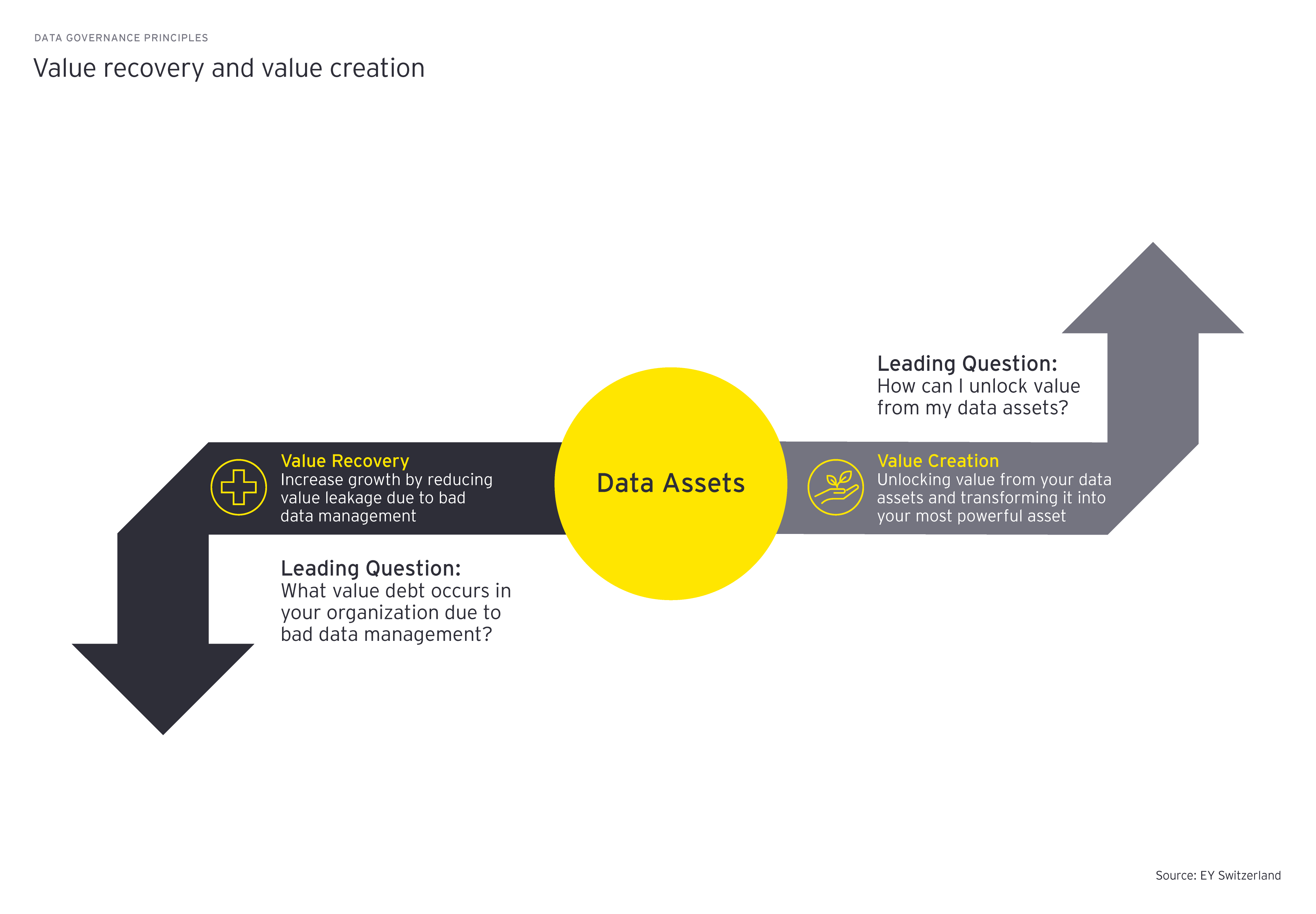EY refers to the global organization, and may refer to one or more, of the member firms of Ernst & Young Limited, each of which is a separate legal entity. Ernst & Young Limited is a Swiss company with registered seats in Switzerland providing services to clients in Switzerland.
Related article
If data's the new gold, how do you use it to create value?
Investing in data governance is key to safeguarding reputation, avoiding costly mistakes – and securing a competitive edge.
However, why would you shift from designing data initiatives in isolation, to leveraging your data artefacts for reuse by establishing a good data governance? In our experience, business leaders want to put a figure on the cost and benefits of implementing data governance improvements. While everyone agrees that data is a valuable asset, it can be very difficult to quantify the return on investment. In this article, we propose how to create the business case for data governance.
In recent years, we have witnessed a growing awareness and need within organizations for sustainable data governance. This is reflected in the fact that the Chief Data Officer (CDO) role has emerged and established itself as a business-critical C-level position. However, appointing a single person as a solution to bring order to chaos rarely works. CDOs typically experience high turnover amid growing pressure as they are held accountable for transformational changes and are expected to generate tangible return on investments (ROIs) within the tightest of timelines.








